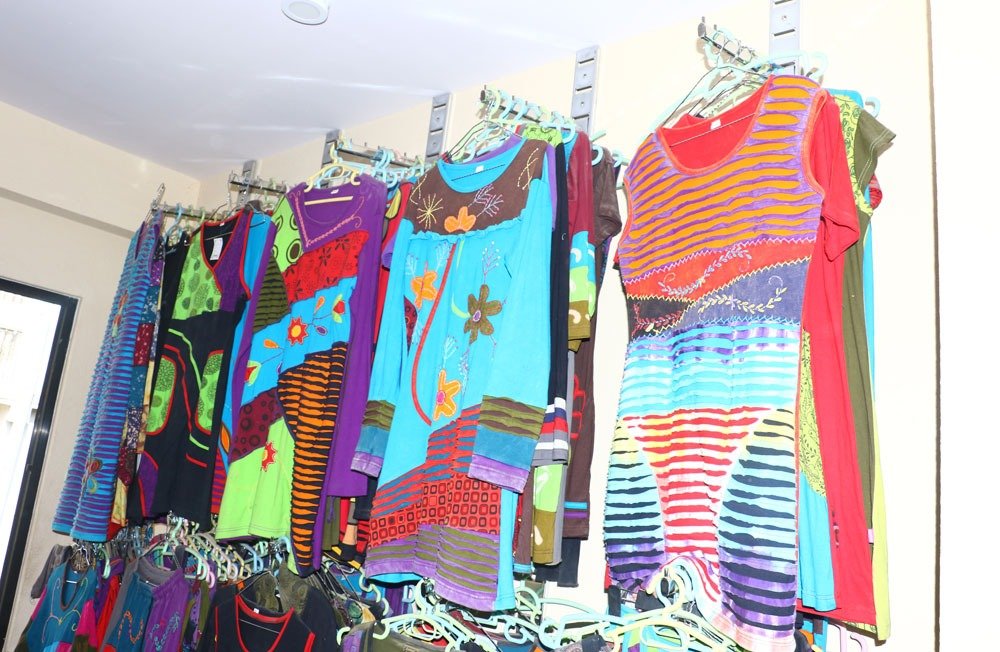Fashion has always been more than just fabric stitched together. It reflects identity, culture, and lifestyle. In today’s world, where fast fashion dominates, many are turning toward alternative and more ethical forms of self-expression. One such growing movement is the revival of handmade hippie clothing, which beautifully blends artistry, sustainability, and individuality. Rooted in the free-spirited counterculture of the 1960s and 70s, hippie fashion is making a strong comeback, not just as a nostalgic nod but as a conscious choice for modern consumers.
This article explores the essence of handmade hippie clothing, its cultural significance, how it supports sustainability, and why it continues to inspire generations of free thinkers, artists, and eco-conscious individuals.
Table of Contents
The Roots of Hippie Fashion
The hippie movement of the 1960s and 70s was defined by peace, love, and resistance to mainstream materialism. Hippie clothing reflected these values—flowing garments, tie-dye shirts, hand-embroidered jackets, and bohemian accessories became symbols of rebellion against conformity.
While much of mainstream fashion was mass-produced, hippies sought uniqueness. Their clothing often came from second-hand shops, handmade creations, or cultural inspirations like Indian kurtas, Afghan coats, or Native American patterns. In many ways, handmade hippie clothing was not just fashion—it was a statement of individuality, spirituality, and harmony with the earth.
What Makes Handmade Hippie Clothing Special?
Unlike machine-produced garments that lack personality, handmade hippie clothing carries soul and creativity. Each piece is unique, often reflecting the artisan’s personal touch. The following elements make it distinct:
- Natural Fabrics – Organic cotton, hemp, linen, and wool are commonly used. These materials are eco-friendly, breathable, and comfortable.
- Artistic Expression – From vibrant tie-dye to hand embroidery, patchwork, beadwork, and batik prints, handmade pieces embody individuality. No two items are exactly the same.
- Cultural Influences – Many designs incorporate global artistry, from Nepalese woven fabrics to Indian block prints and Guatemalan embroidery.
- Durability – Handmade garments are often sturdier than fast-fashion alternatives because of the attention to detail in craftsmanship.
- Ethical Production – By supporting artisans and small workshops, buyers contribute to fair wages, ethical trade, and cultural preservation.
Sustainability and Conscious Consumerism
Today’s consumers are increasingly aware of the damaging effects of fast fashion—pollution, exploitation of workers, and waste. Handmade hippie clothing aligns with sustainable fashion values:
- Slow Fashion: Handmade clothing encourages mindful purchasing. People buy fewer pieces, but each item carries greater meaning and durability.
- Eco-Friendly Materials: Natural dyes, organic fibers, and recycling methods are often part of the creation process.
- Fair Trade: Purchasing from artisans supports small communities rather than multinational corporations.
- Low Waste: Many hippie-inspired items use patchwork, upcycled fabrics, or recycled threads, reducing textile waste.
In essence, handmade hippie fashion is not just about style; it’s about living a conscious lifestyle.
Popular Styles in Handmade Hippie Clothing
The charm of hippie fashion lies in its diversity. Some popular handmade styles include:
- Tie-Dye Creations – Swirls of color created by hand-dyeing make each shirt, dress, or skirt unique. Tie-dye continues to be one of the strongest symbols of hippie fashion.
- Patchwork Clothing – Combining different fabrics into one garment reflects creativity and resourcefulness. From patchwork pants to jackets, these pieces carry a rustic yet artistic appeal.
- Crochet and Knitting – Handmade crochet tops, cardigans, and accessories embody bohemian charm while supporting traditional crafts.
- Hand-Embroidered Details – Intricate embroidery on blouses, skirts, or jackets adds artisanal flair. Designs often include flowers, mandalas, and ethnic motifs.
- Bohemian Dresses – Long, flowing dresses made from lightweight fabrics, often hand-stitched or naturally dyed, remain timeless.
- Handcrafted Accessories – Macramé bags, beaded necklaces, and handmade jewelry complete the hippie look while supporting artisanship.
Handmade Hippie Clothing in Modern Fashion
What was once a counterculture movement has now merged into mainstream fashion. Major festivals like Coachella and Burning Man showcase handmade hippie-inspired outfits as staples of festival culture. Even luxury brands have embraced bohemian styles, though often at a steep markup.
However, true handmade hippie clothing stands apart because it is not about following a trend—it’s about authenticity and supporting creative communities. Many small businesses, online stores, and local markets now sell handmade pieces that reflect genuine craftsmanship.
Where to Find Handmade Hippie Clothing
With global demand for sustainable fashion growing, handmade hippie clothing is more accessible than ever. Common sources include:
- Local Artisan Markets – Many hippie-inspired clothes are found in street markets and fairs.
- Online Stores & Etsy Shops – Independent artisans sell directly to global buyers through platforms like Etsy.
- Specialty Boutiques – Some eco-conscious boutiques focus solely on handmade, bohemian, and hippie-inspired apparel.
- Travel Destinations – Countries like Nepal, India, and Guatemala are hubs of handmade hippie fashion. Travelers often buy directly from artisans.
Why People Choose Handmade Hippie Clothing
The growing appeal of handmade hippie fashion comes down to more than style. People choose it for:
- Self-Expression – Each piece is unique, allowing wearers to showcase individuality.
- Comfort – Loose, natural-fabric clothing supports a relaxed lifestyle.
- Values – Many buyers align with eco-consciousness, spirituality, and fair trade principles.
- Artistic Connection – Owning a handmade item connects people to the artisan and the culture it came from.
- Timeless Appeal – Unlike trends that fade, hippie fashion remains relevant due to its freedom and creativity.
Handmade Hippie Clothing and Lifestyle
Hippie clothing is more than fashion—it’s part of a lifestyle philosophy. Choosing handmade garments often goes hand in hand with mindfulness, vegetarianism or veganism, yoga, meditation, music festivals, and sustainable living. For many, dressing in hippie clothing is not just about aesthetics but about belonging to a community that values peace, freedom, and creativity.
Conclusion
Handmade hippie clothing is more than an alternative style—it’s a movement that connects past counterculture ideals with modern sustainable living. Each handmade piece tells a story: of the artisan who crafted it, the cultural traditions it draws from, and the values of individuality and consciousness it represents.
In a world overwhelmed by fast fashion and mass production, handmade hippie clothing offers a refreshing reminder that fashion can be both beautiful and meaningful. Whether it’s a tie-dye shirt, a hand-embroidered skirt, or a patchwork jacket, these garments are not just clothes—they are expressions of freedom, artistry, and a deeper connection to the planet.
By embracing handmade hippie fashion, wearers are not only making a style statement but also supporting sustainability, fair trade, and authentic creativity. In the end, it’s not just about what you wear, but the values you embody through your clothing choices.





